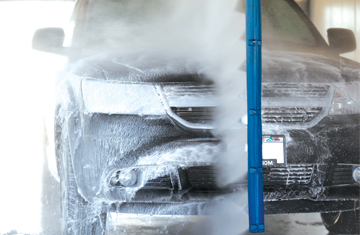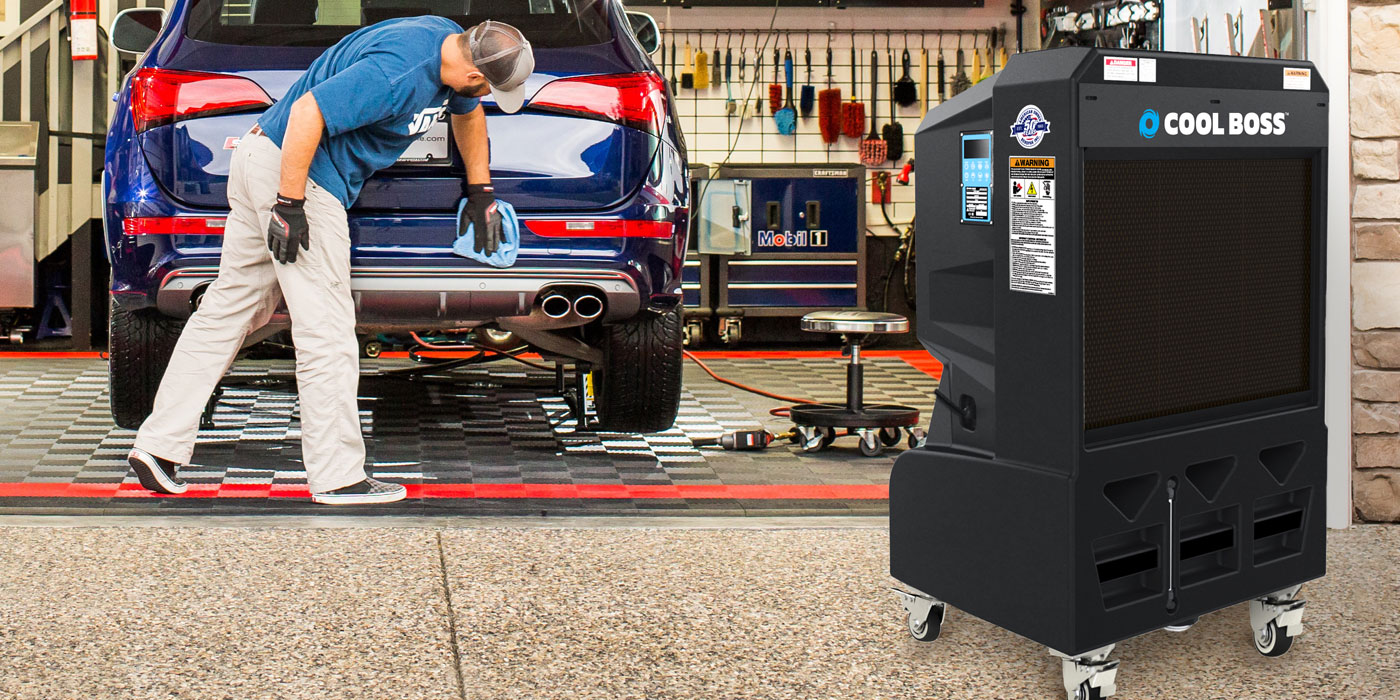Last time we went over the first of the “five factors of clean”, water quality. Poor water quality is the leading cause of wash performance issues. A close second is our second factor, mechanical action. Mechanical action is the combination of physical forces to help remove soils from the vehicle’s surface. There are two major classes of mechanical action used in carwash cleaning. There is impingement (touchfree/hi-pressure/hi-impact) and friction. Many washes today do a combination of touchfree and friction, typically referred to as a hybrid wash.
One thing that needs to be kept in mind is that the way vehicles are made has changed over time. Such materials as paint and metal or plastic are not the same and therefore, as vehicles evolve, the carwash industry needs to evolve as well to keep producing clean, shiny, dry vehicles. Keep in mind the different types of vehicles you might be cleaning and their specific cleaning needs. Different makes, models and years of a vehicle can have different paint types that have been applied. Because of the variation of vehicles, be sure that the type of wash and how product is applied will be safe and effective for all vehicles. Knowing your customer base and what they drive will help determine the best combination of mechanical action to use in your wash.
The environment is another key factor that plays a role in what types of mechanical action is used at your facility. Places with large soil types (mud, snow, ice, etc.) may want to use some type of impingement application early in the process to help remove these types of soils. While a wash in a heavily urban environment with oily road film types of soil would be better served with a good presoak and friction early in the process. Choosing the right combinations of mechanical action or reconfiguring current equipment can vastly improve wash quality.
Lastly, state and local regulations may limit the choice of mechanical action. In areas sensitive to water usage (almost everywhere) carwashers may be required to use reclaimed water or have a cap on the amount of water used per car. Areas particularly strict on water usage may preclude you from using impingement applications. Changes in your rates may force you to abandon pieces of equipment that until that point were critical in the process. Keeping up with and understanding consistently changing regulations is key to providing a quality wash for years to come. The good news is, a great deal of carwashes use all sorts of equipment combinations, every kind of variable imaginable, and most found a way to produce great results. As in all businesses, you have to keep evolving or get swallowed by the competition.
Friction
Friction is the act, effect or an instance of rubbing an object against another. In friction washes they use a mechanical application of rubbing or pushing the soil off the vehicle’s surface using brushes. These brushes are available in different types of materials including polypropylene bristles, cloth and various types of foam materials. Although some say cloth gives a better clean, foam seems to give a better shine. Spinning/rotating brushes that clean the surface of the vehicles used at various heights and angles provide a better clean on all areas of the vehicle.
The key to using friction is to constantly monitor the equipment to ensure it is running properly. Know the track speed, RPM of the brushes, proper air pressure settings, check lubrication points, cleanliness, check for leaks, check for proper alignment, know/watch for normal action on the car, check for proper timing and measurement. Set up daily, weekly, monthly, quarterly and yearly services and checks for equipment. Train employees on how to spot trouble and the next steps needed to resolve common issues. If you don’t have the tools needed to accomplish the proper checks and services reach out to your distributor or equipment manufacturer for assistance.
Touchless/impingement washes
Touchless carwashes do not use brushes to clean vehicles. Touchless relies on high-pressure water application and strong detergents to clean vehicles. Only water and chemical solution actually come in contact with vehicle. It helps reduce damage claims because nothing is touching the vehicle. A benefit to using touchless/impingement applications is that it allows for the removal of dirt in the hard-to-reach areas of the vehicle. A couple of great examples of hard to reach areas are the undercarriage and wheels. These areas are hard to reach or fully clean with friction. Special applications like these can add value to wash packages encouraging customers to purchase the higher packages
The theory of impingement: The removal of soil by breaking through and forcing soils off the vehicle’s surface. Think of a leaf on a driveway that is being sprayed with a hose or pressure sprayer. When water hits the concrete it bounces off at angle, getting under the leaf and lifting it off the surface – impingement. There are two types of impingement in modern carwashing, high pressure and high impact. The most common is high pressure which uses less water at higher pressure (over 1000PSI) to create the cleaning force. A benefit of a high pressure application is a relative water savings over other touchfree applications. Although high impact has lost some ground in the last 10 years, the prolific use of reclaimed water is bringing it back. High impact applications use significantly more water at a lower pressure (250-800PSI) to create the cleaning force. High impact applications are great for removing mud and other large soils. Many newer washes use both types of impingement and friction to meet their customer’s demands.
Water pressure
Water pressure is the force frictionless washes use to clean the vehicle. Force is described as Mass times Acceleration. Force of water is measured in pounds per square inch or PSI.
Make sure to check the speed of the cycle and various other settings to ensure proper cleaning. Check to be sure that all of the nozzles are oriented properly and are not clogged or worn out.
Cleanliness: The cleanliness of the equipment and wash bay/tunnel has a direct and significant impact on a customer’s wash satisfaction. In addition, clean equipment works better, is easier to work on, and makes it much easier to spot trouble in a timely manner.
Mechanical action is a critical factor of cleaning and plays a huge role in a consumer’s buying decision. Certain people believe that in order to get a really clean car you need to use friction to best remove the soils on the vehicle. While this might be true, to some consumers a friction wash could possibly damage their vehicle’s surface. Both types of mechanical action help produce a great wash experience. Knowing the deliverables and limitations of the equipment will help tailor your wash selections to provide the greatest value to your consumer.
Ryan Cook is the assistant vice president of Lustra™ Professional Car Care Products.














